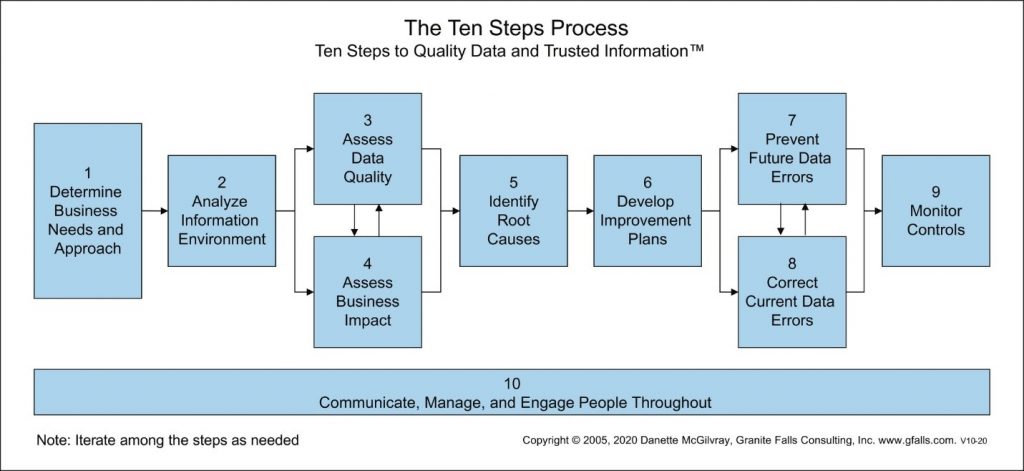
Hello! I’m Mark Horseman, and welcome to The Cool Kids Corner. This is my monthly check-in to share with you the people and ideas I encounter as a data evangelist with DATAVERSITY. (Read last month’s column here.) This month we’re talking about Data Quality (DQ). Data Quality, the phrase “garbage in, garbage out,” dirty data, data cleansing, and so many more have been on the lips of data managers and organizations for decades. It’s just as critical now as ever before. However, Data Quality is not a fish you can catch. You can’t just buy a solution or implement a one-time fix and be done. Data Quality is about the journey. We’re going to talk about that journey, and ultimately, we’ll see what the Cool Kids are saying.
When you find yourself running a Data Governance program or being tapped as the person or department in charge of Data Quality, you can’t fall into the trap that there’s a one-and-done solution available. There’s no magical architecture solution, no mystical tool that will solve all your problems, and the fairy governance mother is not working with the CDO.
The most critical thing needed for success in Data Quality is engagement with the business, not the procurement of a brand-spanking new tool. The folks “in charge” of DQ can never truly be the folks who are cleansing and preventing data problems organization-wide. After all, the business teams have operational skin in the game related to the production, use, and definition of data. They hear, taste, see, touch, and smell the effects of bad data.
The Data Quality team must collaborate with the business to get to the root cause of quality issues, identify preventative measures, and work with the business on appropriate fixes for dirty data. A lot of the time, that root cause analysis will uncover a process issue, which is where the term “garbage in, garbage out” comes from. Fixing the way business is done isn’t something that shiny new vendor tools will do for you out of the box. It’s something that a collaborative team does to improve the business.
If you rely solely on a software solution, architecture solution, or a mystical magical Data Quality unicorn, you’re missing out on the most critical part that will lead to a successful DQ initiative: positive collaboration with the business on critical data elements. Showing the business that there’s return on investment in preventing data errors (in addition to cleansing a data field) and building a relationship with the data stewards accountable for that data is the true way we improve Data Quality at our organizations.
What are the Cool Kids saying about Data Quality? The featured Cool Kid this month is Danette McGilvray, founder of Granite Falls Consulting. Danette created the Ten Steps to Quality Data™ approach, which you can learn about in her book “Executing Data Quality Projects: Ten Steps to Quality Data and Trusted Information™, 2nd Ed.” (Elsevier/Academic Press, 2021). The Ten Steps are illustrated below:

The focus of the Ten Steps is to understand the business need, know the environment, assess the quality and impact, and then after identifying root causes, look at improvement plans. Following this, both correct and prevent data errors, then provide some controls to the business to ensure ongoing audited quality. The team in charge of the DQ program and all involved in this quality issue communicate at every step along the way. In my experience, this has been the best way to manage and maintain high-quality data.
Check out some of Danette’s other contributions to the Data Quality community:
- My Career in Data Episode 54: Danette McGilvray
- Executing Data Quality Projects: Ten Steps to Quality Data and Trusted Information™, 2nd Ed (Elsevier/Academic Press, 2021)
- Data Quality Learning Plan – DATAVERSITY Training Center
- Entrepreneurial Skills for Data Governance and Information Quality Professionals – DGIQ East December 2023
- In-house/on‐site/live stream training, consulting, and one-on-one coaching. If you are interested in having Danette McGilvray/Granite Falls Consulting support your efforts, please contact danette@gfalls.com.
Remember that you can meet and join Cool Kids like Danette McGilvray at DATAVERSITY events:
- Data Governance & Information Quality Conference – Washington, D.C. (Dec. 4-8, 2023)
- Enterprise Data World 2024 – Orlando, Fla. (March 25-29, 2024)
- Submit a proposal to speak at Enterprise Data World 2024 (deadline is today, Nov. 6!)
Want to become one of the Cool Kids? All you need to do is share your ideas with the community! To be active in the community, come to DATAVERSITY webinars, participate in events, and network with like-minded colleagues.
Next month, I’ll be sharing some thoughts on data ethics, especially with emergent technologies. Stay tuned!
